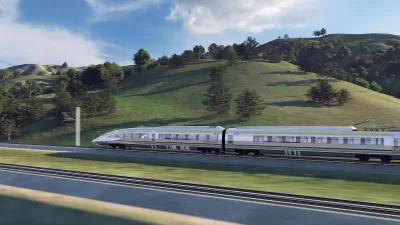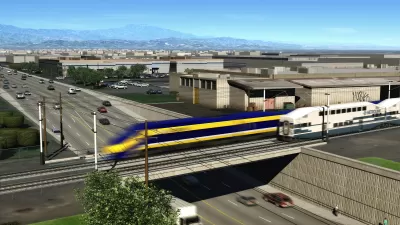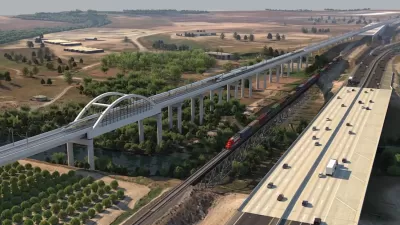The San Jose to Merced Project Section Final Environmental Impact Report/ Environmental Impact Statement could be approved by April 21.

The California High-Speed Rail Authority (CAHSRA) on February 25 released the Final Environmental Impact Report/Environmental Impact Statement for a key section of the California High-Speed Rail Project in Northern California.
The EIR/EIS for the approximately 90-mile section of the route connecting San Jose to Merced Project in Northern California will be under consideration for approval at a two-day board meeting on April 20 and 21, according to a press release from CAHSRA published on February 25.
"In the San Jose to Merced Project Section, high-speed trains will travel through or near the cities of Santa Clara, San Jose, Morgan Hill, Gilroy and Los Banos, connecting Silicon Valley and the Central Valley," according to the press release. "The proposed preferred alternative alignment would include upgrading existing rail lines between San Jose and Gilroy and constructing a new high-speed rail alignment with more than 15 miles of tunnels through Pacheco Pass in the Diablo Range."
Roger Rudick had the scoop on the final EIR/EIS in an article for Streetsblog California, calling the San Jose to Merced Project Section an "all-important connection." Boris Lipkin, Northern California regional director for the project, is quoted in the article calling the EIR/EIS a big milestone for the project. Rudick's coverage includes more detail on the recent history of planning and politics on the project.
FULL STORY: California High-Speed Rail Releases Final Environmental Studies to Connect Silicon Valley and Central Valley

Maui's Vacation Rental Debate Turns Ugly
Verbal attacks, misinformation campaigns and fistfights plague a high-stakes debate to convert thousands of vacation rentals into long-term housing.

Planetizen Federal Action Tracker
A weekly monitor of how Trump’s orders and actions are impacting planners and planning in America.

Chicago’s Ghost Rails
Just beneath the surface of the modern city lie the remnants of its expansive early 20th-century streetcar system.

Bend, Oregon Zoning Reforms Prioritize Small-Scale Housing
The city altered its zoning code to allow multi-family housing and eliminated parking mandates citywide.

Amtrak Cutting Jobs, Funding to High-Speed Rail
The agency plans to cut 10 percent of its workforce and has confirmed it will not fund new high-speed rail projects.

LA Denies Basic Services to Unhoused Residents
The city has repeatedly failed to respond to requests for trash pickup at encampment sites, and eliminated a program that provided mobile showers and toilets.
Urban Design for Planners 1: Software Tools
This six-course series explores essential urban design concepts using open source software and equips planners with the tools they need to participate fully in the urban design process.
Planning for Universal Design
Learn the tools for implementing Universal Design in planning regulations.
planning NEXT
Appalachian Highlands Housing Partners
Mpact (founded as Rail~Volution)
City of Camden Redevelopment Agency
City of Astoria
City of Portland
City of Laramie





























